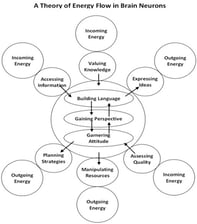Published on
Designing Programs for Adult-Friendly Colleges and Universities

When we were children, most of us had teachers who knew much more than we did. These teachers usually told us what to learn. As adults, we may not know as much the teacher, but we have a wealth of experiences and often want to talk about what we know and what we would like to learn. Needless to say, the way we teach children does not work well for adults.
Attracting and retaining adults in higher education is crucial in the new economy; an economy that calls for updated, rearranged, and value-added knowledge to meet the needs of the new knowledge society. Colleges and universities must be able to attract adults not only through their course offerings, but help them to maintain a stable environment in which to learn, network, and become actively involved in their learning process.
Most would say that all college students are adults, believing that the age of 18 and above constitutes being an adult. However, within higher education, historical patterns of adult student participation have been quite distinctive. According to the National Center for Education Statistics (1995, 2002a), in the past thirty years, adult students (25 and over) have increased dramatically in both number and in the percentage of the student population in relation to younger students.
For example, between 1971 and 1991, adult students increased their graduate enrollment to from 28 percent to 43 percent. They represent over four million students. With the recent increase in baby-boomers returning to college between 1995 and 2005, adult students continued to increase in number but represented a smaller percentage of the undergraduate population.
Changes have continued over the past thirty years in the age group percentages of enrolled collegiate students. In 1970 for example, college students aged fourteen to twenty-one years represented 55 percent of the collegiate population. In 2010, however, fourteen to twenty one year-old students represented only about 46 percent of the collegiate population. The remaining percentages reveal that 15.5 percent are students aged twenty-two to twenty-four years, and 38 percent are adults aged twenty-five and older (National Center for Education Statistics, 1995, 1997, 2002a).
Now that the stats are out of the way, I will share some strategies that could help make adult learners comfortable in a higher education environment. First, colleges and universities must understand the characteristics of adult learners.
Characteristics of Adult Learners
Adult learners are typically:
- Problem-centered: they seek educational solutions to the puzzle of where they are compared to what they want to be.
- Results-oriented: they have specific results in mind for their education goals and will drop out if education does not lead them to desired results.
- Skeptical of new information: their preference is to try before acceptance.
- Focused on relevance: they seek education that relates or applies directly to their perceived needs.
- Responsible: they are accountable for their own learning if that learning is perceived as being timely and appropriate.
In short, adult learners usually approach learning differently than younger learners because they are more self-guided, they expect to bring more to their learning situation because of their previous experiences, and they are less willing to participate in a certain way simply because their instructors require they do so.
Suggested Ways to Make Adult Learning Interesting
The following are teaching strategies for adult learners that may be more effective than typical strategies for younger learners:
- Provide many opportunities for dialogue. Use adult learners as resources for yourself and for others; ask open-ended questions to draw out students’ knowledge and experiences.
- Take time to clarify student expectations of the course; permit debate and the challenge of ideas. It is important to protect and encourage minority opinions within the class.
- Engage adult students in designing the learning process; expect them to want more than one medium for learning.
- Show immediately how new knowledge or skills can be applied to current problems or situations; use participatory techniques such as case studies and problem solving groups.
- Focus on theories and concepts within the context of their applications to relevant problems; orient courses content towards direct applications rather than toward theory.
- Use a variety of teaching materials and methods to take into account differences in style, time, types and pace of learning.
Instructional design for adults tends to be more effective if it is learner-centered rather than instructor-centered. Instructors must maintain a careful balance between the presentation of new material, its applications, discussions, and participation among students, and the quarter’s calendar. In fact, the instructor must wrestle with the paradox of establishing control by taking the risk of giving it up.
Despite the tendency of an instructor to both feel good about expertly delivering information to the students, and to feel threatened by student challenges to a courses plan, relinquishing some of this control can give instructors a kind of facilitative control that is most effective for adult learners. Models of instruction for adults should be a combination of instructor–centered and learner–centered. Moreover, understanding the thinking styles of adult learners will help instructors meet a variety of adult learning styles: reflective, creative, practical, and conceptual; visual, auditory, kinesthetic and environmental.
Colleges and universities are seeking a variety of ways to meet all students’ needs—and the adult learner’s need for immediacy, interactivity, and group-centered learning is at the top of there list. There is no single formula, particularly since adult learners often span the learning style range. Though each institution will find its own answers, this common set of principles and suggestions will help guide decisions and directions for and about adult learners in the college and university environment.



